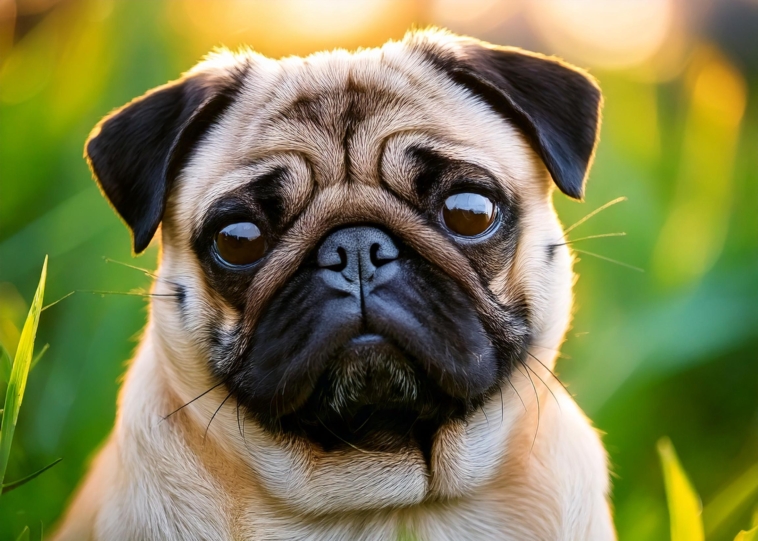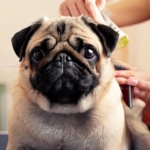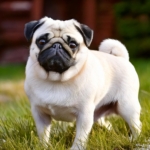The Pug Life: A Health Manual for the Wrinkled, Wheezy, and Wonderfully Weird
Let’s face it: pugs are snorty, squishy-faced comedians in dog body form. But beneath that snub-nosed cuteness is a laundry list of health oddities that can turn any owner into a part-time dog nurse. If you considered your pug “built different,” you’re right on the money—pugs are a snuffling, snorting, slightly snoring health experiment disguised by adorability.
Let’s get down to business on how to keep your pug from becoming a potato with asthma.
Breathing Difficulties: When Your Dog Sounds Like a Tiny Chainsaw
Welcome to the brachycephalic world of breeds—”flat-faced drama queens.” Pugs, with their adorable flattened noses, tend to puff and pant as if they’d just run a marathon after all they did was tumble off the couch.
Common Red Flags:
- Truck driver snoring after Thanksgiving dinner
- Gasping after little effort (such as wagging their tail)
- Impromptu gagging sessions during snack time
- Blue gums (not a new fashion statement—see a vet!)
The Perpetrators:
- Stenotic Nares: Nice way of saying “nostrils the size of a pinhole”
- Elongated Soft Palate: Because apparently pugs have too much of a good thing at the back of their throat
- Tracheal Collapse: That’s correct, their windpipe could very well give up
Prevention Tips:
- Keep them lean (yes, puppy eyes deceive)
- Avoid hot and humid days unless you prefer to carry them home
- Regular vet check-ups to keep the wheeze in check
Skin Issues: Folds of Fury
Those cute pug wrinkles? Cute. But also hotels for bacteria. If not wiped down, those skin folds become itchiest crime scenes ever.
Common Offenders:
- Pyoderma: Bacterial squatters in their folds
- Hot Spots: Flaming patches of itchiness
- Mange: Not a rock band—just mad mites raving on their skin
- Dry Skin: Like your aunt’s elbows during winter
How to Fight Back:
- Wipe the folds (yes, all of them—hello, Wrinkle Patrol.)
- Feed them skin-friendly foods
- Visit the vet if things begin to look flaky, crusty, or suspicious
Pug Allergies: Sneezes, Scratches, and Sorrow
Pugs are allergic to life on occasion. Food, dust, pollen, fleas—if it’s out there, they may itch over it.
Warning Signs Your Pug’s Having a Minute:
- Non-stop scratching as if performing in a flea circus
- Red, drippy eyes and a nose that runs faster than the pug itself
- Ear crud that reeks of old socks
- Vomiting or diarrhea—aka pug drama in full production
Culprit Suspects:
- Food allergens like problem proteins
- Environmental drama: pollen, mold, dust
- Flea bites that inspire an over-the-top reaction
Solution? Regular vet checks and Sherlock Holmes-level allergy tracking.
Eye Problems: Bug-Eyed and High Maintenance
Those huge soulful eyes? They’re also prohibitively vulnerable. Pugs essentially keep their eyeballs just short of spilling out.
Top Eye Offenders
- Corneal Ulcers: Ouch. That scratchy, squinty expression isn’t them being adorable
- Dry Eye: Yes, dogs can get “office eyes” too
- Entropion: Eyelids rolling inward, because why not?
- Proptosis: AKA “My eye popped out and now everybody’s freaking out”
- Pigmentary Keratitis: Sounds high-falutin’, is essentially their cornea going goth
Keep those peepers clean, wet, and clear of anything pointy—or their next selfie will be from the vet’s table.
Bone & Joint Problems: Pugs With Limp and Sass
Pugs don’t have the best skeletal system. They’re basically held together with hope, snorts, and vet bills.
What You’re Dealing With
- Hip Dysplasia: Hip bones playing musical chairs
- Patellar Luxation: Kneecaps going on walkabout
- Legg-Calvé-Perthes Disease: The femur gives up halfway through
- IVDD: Spinal discs playing a dangerous game of Jenga
- Arthritis: Slow-motion pug with extra groaning
The Fix: Keep them light, keep them moving, and don’t skip vet appointments.
Weight Woes: The Couch Potato Chronicles
Pugs + all-you-can-eat = bowling ball of fluff. These pups will eat until gravity gets the best of them.
Tips for control
- Feed good food, not the “whatever is on sale” sack
- Daily walks (yes, they’ll protest—but bribe with snacks)
- Keep an eye on their figure: round does not qualify as a pug body type
- Vet check-ins to maintain belly discipline
Oral Health: Beware the Pug Breath of Doom
A pug’s mouth can turn from “cute yawn” to “radioactive sewer” if you don’t keep it clean. Dental disease is serious—heart, kidney, and liver trouble can follow.
Keep That Mouth Clean
- Brush daily with dog toothpaste (not yours—mint is not their thing)
- Treat them to vet-approved chew treats
- Monitor for bleeding gums, chewing strangeness, or them turning up their nose at their favorite snacks (code red!)
Digestive Drama: Flat-Faced Food Fumbles
Due to their flattened faces and hungry eating habits, pugs have a tendency to inhale meals as though they are in a competitive eating contest.
Common Digestive Complications
- Brachycephalic Syndrome: Short nose = complex snack time
- Food Allergies: Beef to grains, some foods are the bane of life
- Speed-Eating Madness: Results in gas explosions and bellyaches
- Greasy Diets: Greasy meals = irate pancreas
Solution? Eat slow, eat smart, and perhaps refrain from sharing your pizza.
Routine Vet Care: Because Prevention Is Cheaper Than Emergency Surgery
Let’s be real—your pug is going to visit your vet more than your grandmother. And that’s fine.
The Essentials
- Vaccinations: Make that pug pandemic-proof
- Parasite control: Fleas, ticks, worms—get rid of them all
- Nail trimming: Long nails = sore paws
- Dental cleanings: Because brushing doesn’t do the whole job
- Ear and skin checks: Catch problems before they become crusty
Balanced Diet & Exercise: Eat, Poop, Run (But Not Too Fast)
Imagine your pug is a living potato with legs—they require the proper fuel and activity.
Feed for Health
- Protein: Muscle strength
- Fats: For shiny coats and dramatic looks
- Carbs: For that fleeting 2-minute zoomie
- Vitamins/Minerals: So they don’t literally fall apart like a 2003 laptop
Don’t feed table scraps. They don’t require your fries—regardless of how judgmental their look.
Exercise That Works
- Short Walks: Imagine “leisurely stroll” not “military hike”
- Indoor Play: Tug, fetch, or chase-the-snack
- Mental Games: Puzzle toys, treat hunts, obedience tricks (both brain and snack motivation)
Mental Health: Pugs Need Enrichment Too
Bored pugs get weird. Like, “I chewed your new shoes and now I’m crying about it” weird.
Brain Boosters
- Puzzle toys (bribery with snacks encouraged)
- Basic command training (yes, pugs can learn more than “sit… eventually”)
- Playdates with other dogs and humans
- Your undivided attention (they’re dramatic, remember?)
Final Thoughts: How to Keep Your Pug From Becoming a Fluffy Hot Mess
- Vet appointments are not discretionary. They’re planned therapy for you and your pug.
- Feed them well—don’t dump food in that little garbage muncher.
- Exercise intelligently, not strenuously. Don’t force them into wheezing fits.
- Eye maintenance, ear inspections, wrinkle washing are new hobbies for you.
Spoil your pug like royalty—with a personal groomer, nutritionist, and medical staff—and they will repay you in unconditional love, gentle snores, and the occasional enigmatic aroma.





